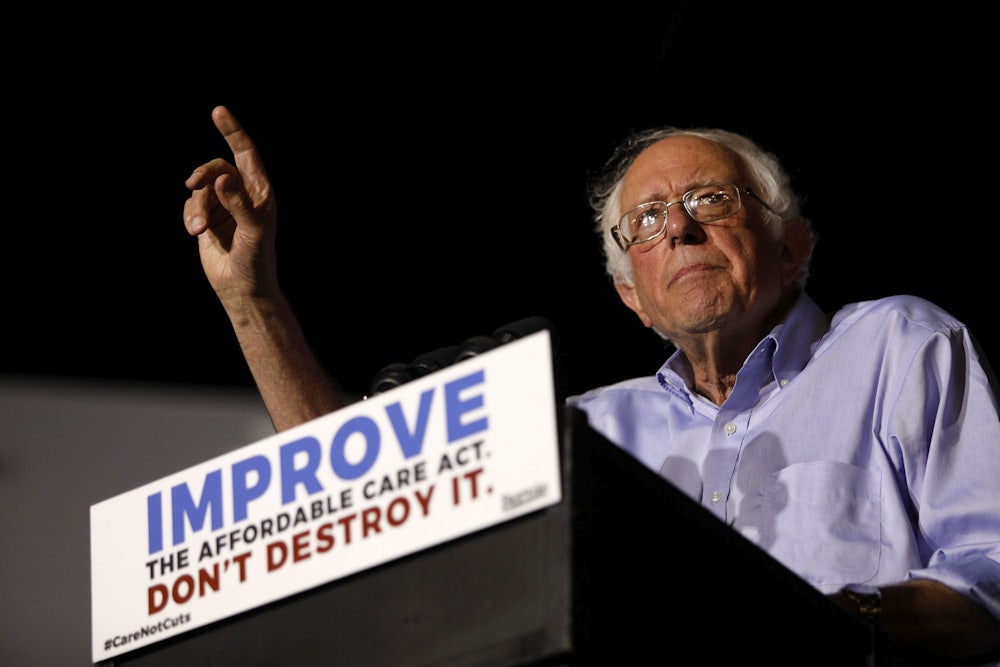In The Atlantic today, Clare Foran provides a dispatch from Sanders’ red-state health care rallies, and interviews the man himself:
“A lot of folks go where the money is, and I understand that, we live in a time of Citizens United,” Sanders said in an interview when asked if he thinks other senators will start reaching out to red states. “People spend their lives running around the country, raising money to take on the Koch brothers, and the billionaire class. I understand that, but at the same time, Democrats have got to develop a strategy that supports the folks in Kentucky, and West Virginia, and in Tennessee and Mississippi and Alabama, and Wyoming, and Utah. That’s something we’ve got to do.”
Foran notes that Sanders’s rallies are an unusual move for a progressive politician, which points to a much bigger problem: Democrats are floundering in states with large rural populations, a situation partially of their own making.
We don’t know for certain if the Sanders approach will pay electoral dividends. But the Democratic Party needs to reclaim ground that it has lost to Republicans, and in order to do that it needs to revamp its approach to red states. These states aren’t necessarily eternal conservative bastions; some, like West Virginia, aren’t even historically red. Further, they are undergoing the same demographic shifts that affect the rest of the nation—albeit at different paces. There are plenty of practical reasons for the party to challenge the GOP’s dominance in these states.
And the formula for success may not be as complicated—or regressive—as many believe it to be. Democrats don’t need to triangulate on abortion or immigration to illustrate the dangers of Trump administration policy. There’s an increasingly stark gap between Trump’s populist rhetoric and his policies, which Democrats can exploit by hammering health care every day between now and the mid-terms. In other words, they can do exactly what Sanders is doing now.
Even if this strategy doesn’t immediately bring back voters who cast their ballots for Trump, it will almost certainly energize beleaguered progressives who live in these states and have long wanted more party investment in their communities. Democrats don’t just need those votes; they need candidates. The DNC’s recently announced investment in state parties will help, but they also need an energizing message. Bernie Sanders has created it.
